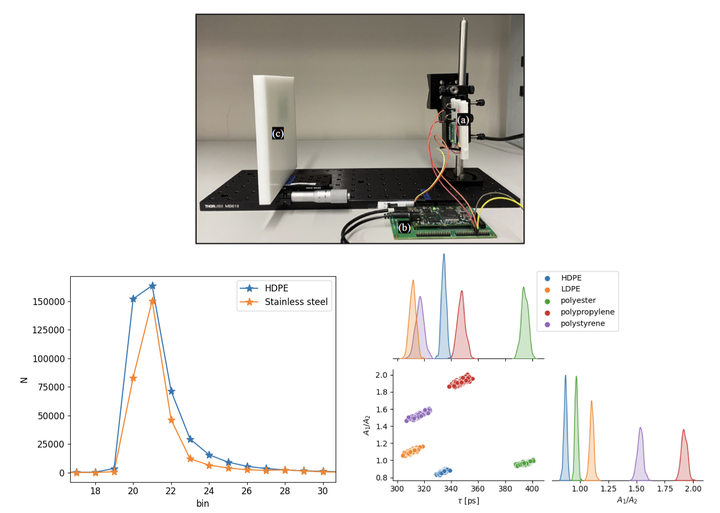Plastic Classification Using Optical Parameter Features Measured with the TMF8801 Direct Time-of-Flight Depth Sensor

Abstract
We demonstrate a methodology for non-contact classification of five different plastic types using an inexpensive direct time-of-flight (ToF) sensor, the AMS TMF8801, designed for consumer electronics. The direct ToF sensor measures the time for a brief pulse of light to return from the material with the intensity change and spatial and temporal spread of the returned light conveying information on the optical properties of the material. We use measured ToF histogram data of all five plastics, captured at a range of sensor to material distances, to train a classifier that achieves 96% accuracy on a test dataset. To extend the generality and provide insight into the classification process, we fit the ToF histogram data to a physics-based model that differentiates between surface scattering and subsurface scattering. Three optical parameters of the ratio of direct to subsurface intensity, the object distance, and the time constant of the subsurface exponential decay are used as features for a classifier that achieves 88% accuracy. Additional measurements at a fixed distance of 22.5 cm showed perfect classification and revealed that Poisson noise is not the most significant source of variation when measurements are taken over a range of object distances. In total, this work proposes optical parameters for material classification that are robust over object distance and measurable by miniature direct time-of-flight sensors designed for installation in smartphones.
Becker, Cienna N., and Lucas J. Koerner. 2023. “Plastic Classification Using Optical Parameter Features Measured with the TMF8801 Direct Time-of-Flight Depth Sensor” Sensors 23, no. 6: 3324. https://doi.org/10.3390/s23063324